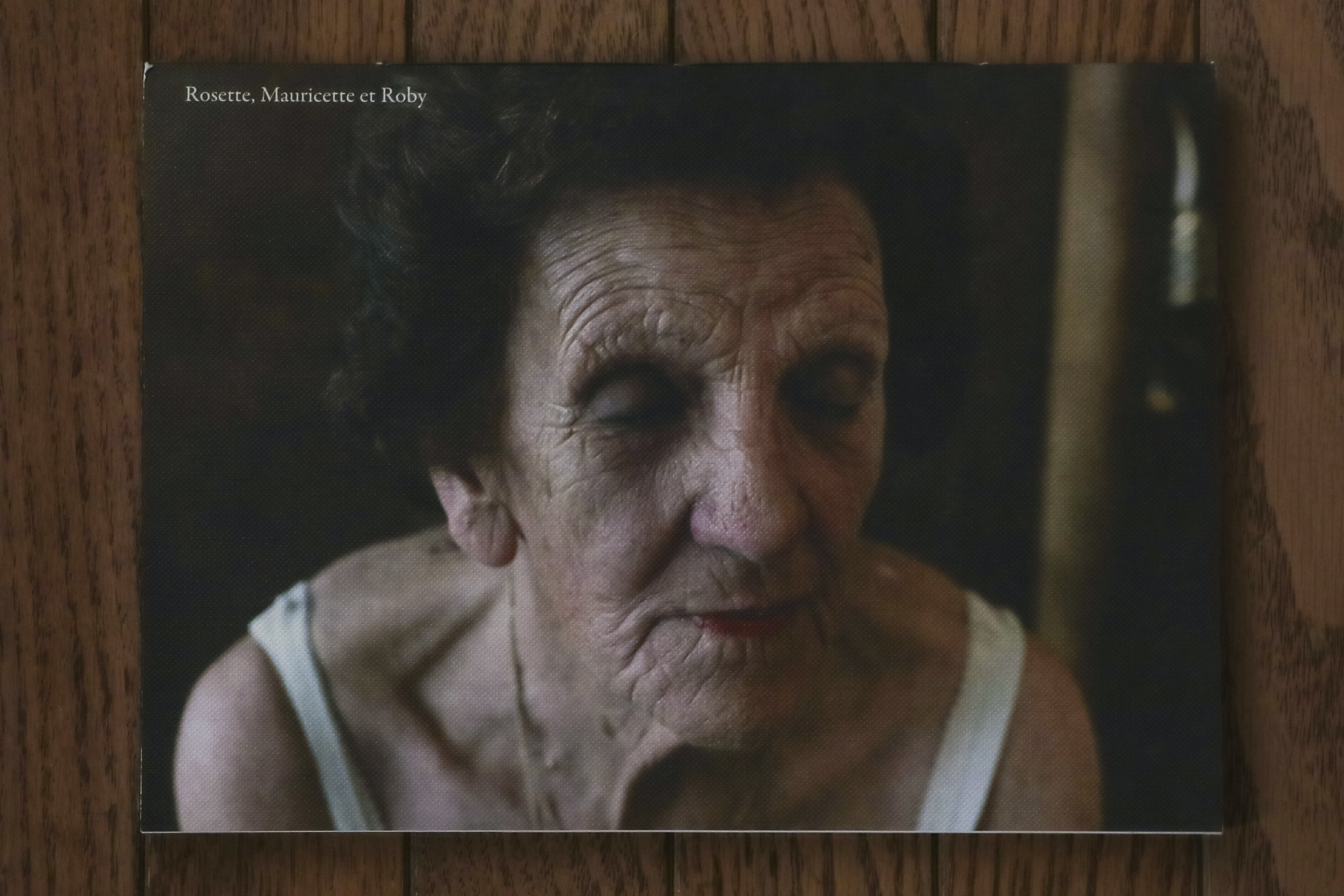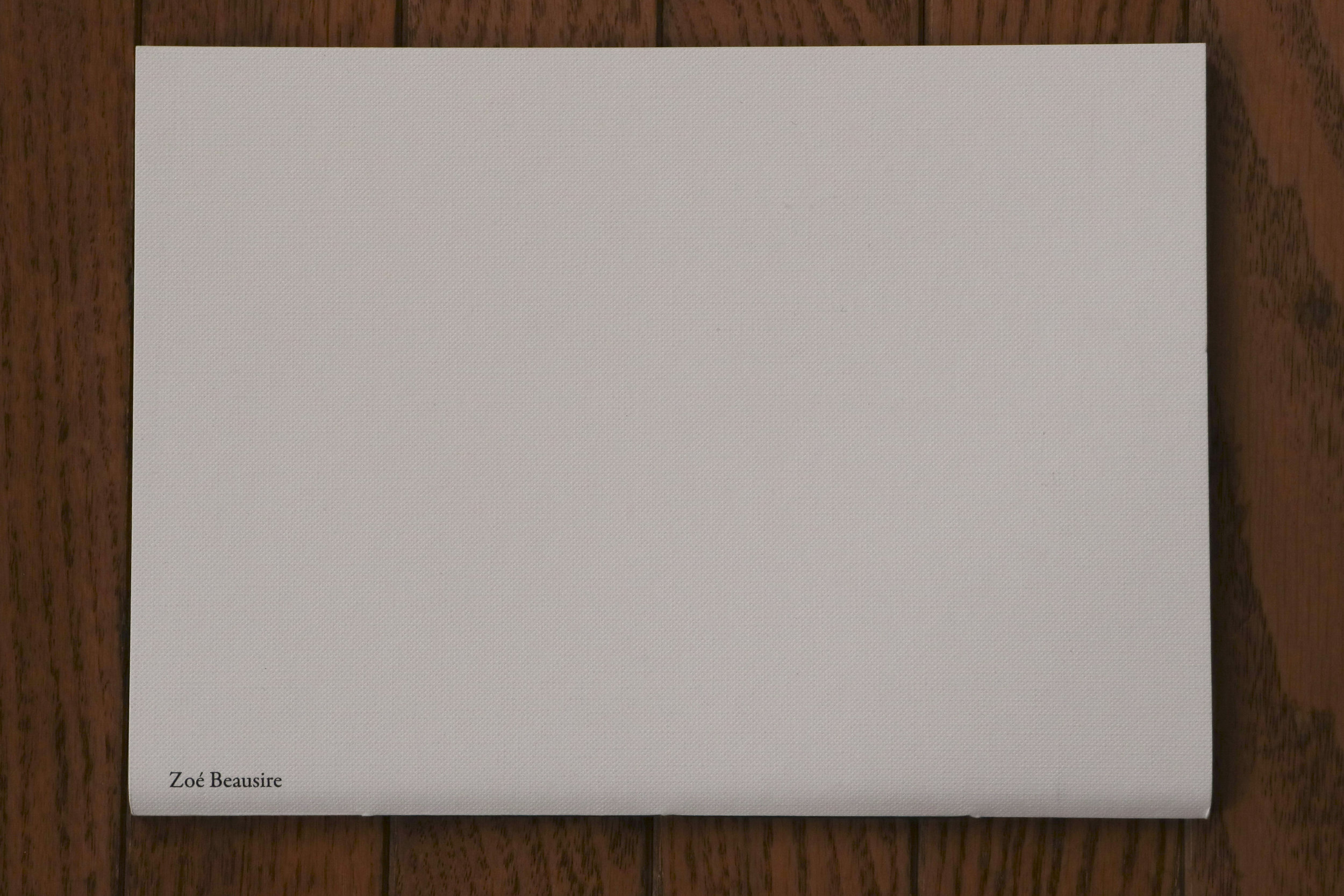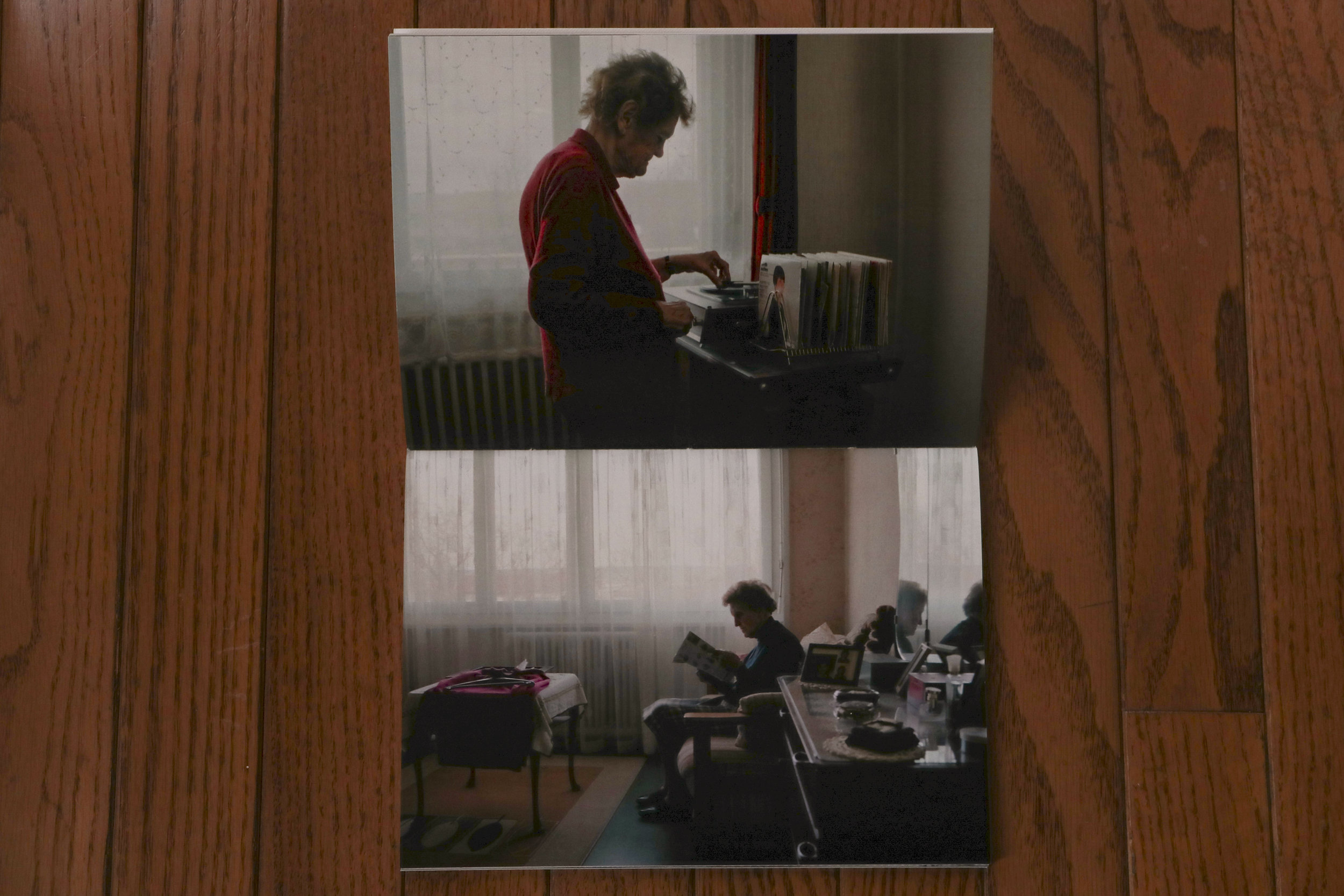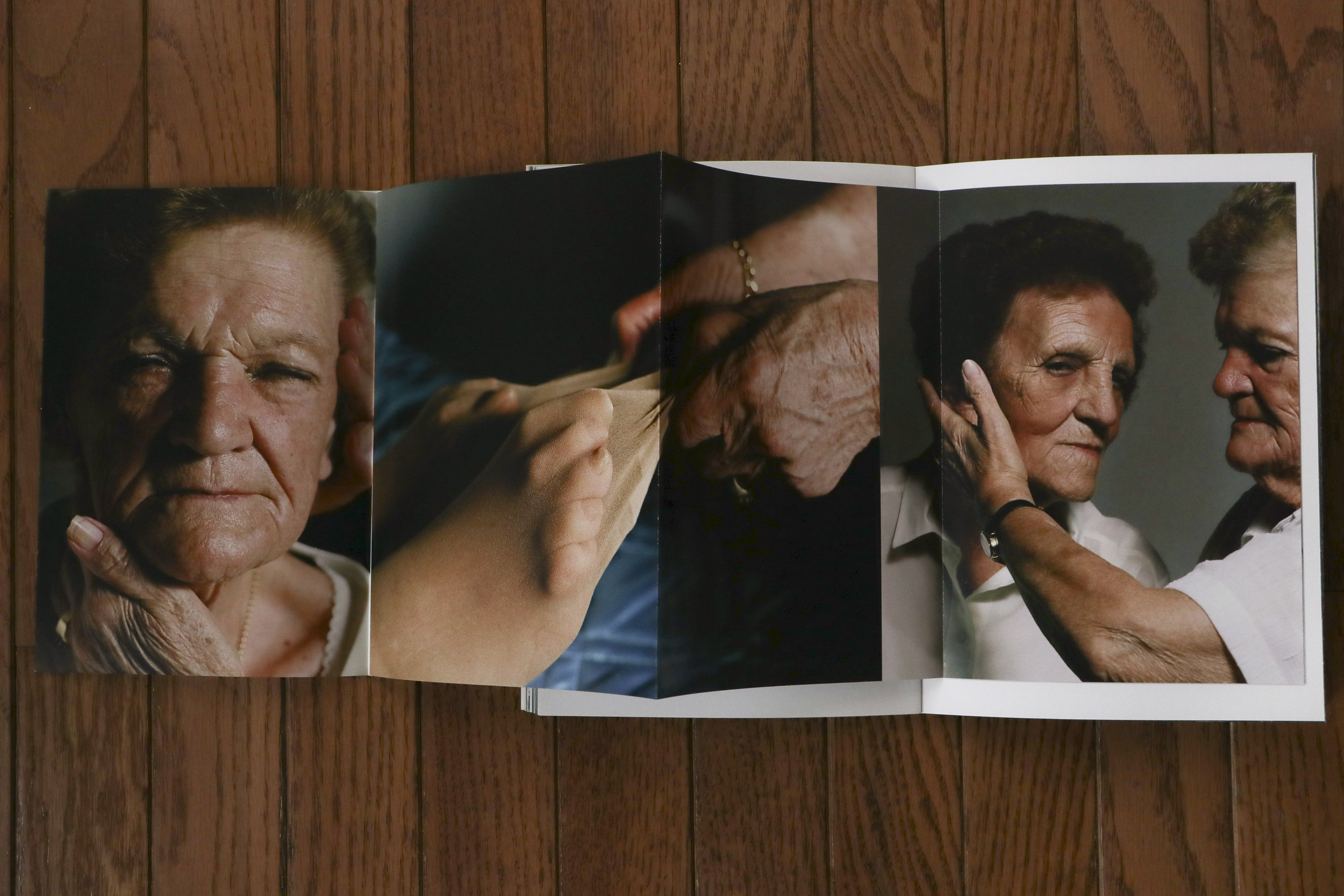When looking at the work of Zoé Beausire, you have a sense that you are not receiving the full story. It is as if Beausire is keeping part of the story away from her audience to protect her subjects from what is beyond the paper. While viewing Rosette, Mauricette et Roby, there are few words to describe what is being seen, but the sections help speak up for the lack of narrative. With only three people shown in the book and a middle accordion pull-out to bridge the gap, the space between Beausire and her viewer is closed slightly with a bit more of understanding. However, the title of the out of place insert in the book may help explain everything to the viewer.
Safely assuming the title is the names of the three pictured in the book, Rosette, Mauricette et Roby shows two elderly women in the beginning section of the book and one elderly man in the end with only a couple of photographs bringing them together. We see the women form a true bond, performing daily tasks together, having fun, and appearing as though they live together. The man, on the other hand, is shown always alone, never smiling, and as if he is living out his final days. The insert in the middle shows an additional seven photographs that show what look like the one woman preparing the other to meet the man. She helps her put on pantyhose and doll up her face just for a simple dance and a drink with him. There can be many different scenarios played out as to what is happening in the book’s binding, but there are two words that warp the whole meaning of Beausire’s photographs.
The pull-out is titled Huis Clos, translated from French to “behind closed doors.” When searched, a famous play by Jean-Paul Sartre under the same title comes up with a description that can be connected to the photographs in Rosette, Mauricette et Roby. The play, in short, is a one-act production of three people that despise each other and are stuck in a room together for the rest of their lives, not realizing they are already deceased in what some may view as hell. It is revealed upon further research of the book and of Sartre’s motives that Sartre, while he does not believe in a true heaven or hell, believes that hell is other people. The title being shared between the play and the pull-out explains a great deal when viewing the rest of the images and reading more in-depth about the show.
It is hard to imagine that the connection made between Huis Clos and Rosette, Mauricette et Roby was not intentional. With no statement made to help guide the viewer other than the pull-out given with the mysterious title, a little bit of research will bring you to the conclusion that Beausire was portraying her three subjects’ hell together and their time apart. Instead of showing them stuck in one room, we have a whole house that they can pace around for all their days. Beausire’s subtle way of keeping the her intentions hidden and having her viewers dig deeper to understand her purpose makes Rosette, Mauricette et Roby an illustrative tagalong to a classic play that will age as beautifully as the subjects in the photographs along with the literary work it emulates.
If you are interested in purchasing Rosette, Mauricette et Roby,
you can purchase it on the Photo-Eye website.
Written by Madison Rich
Photographs by Madison Rich




